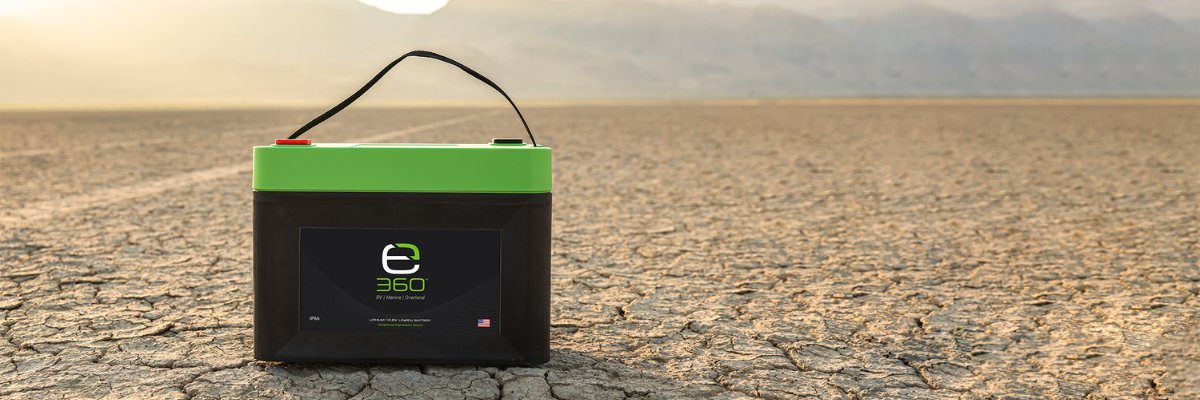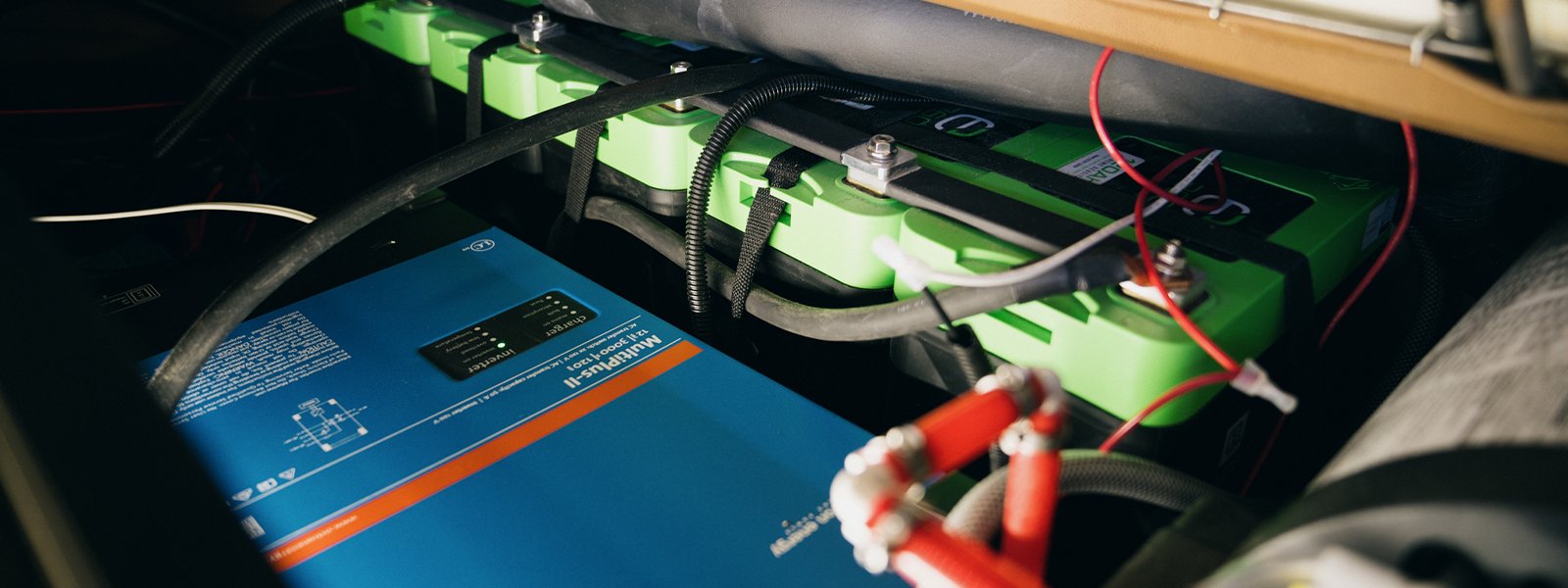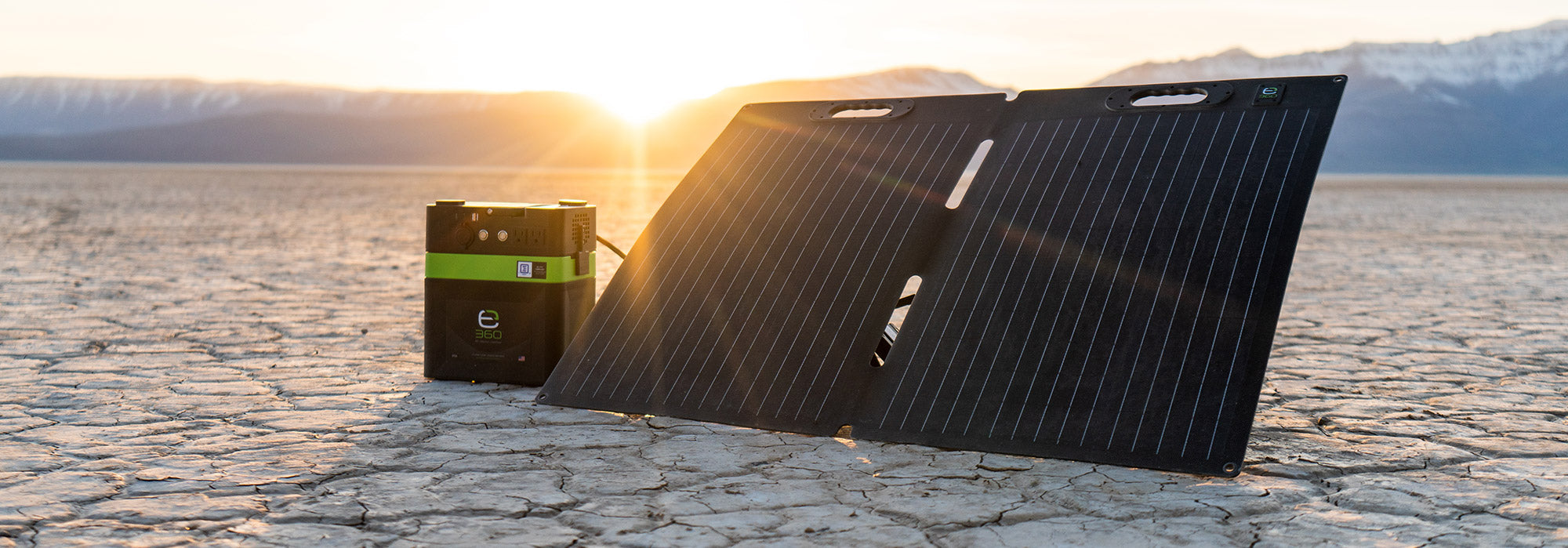Lead Acid vs. Lithium Ion Batteries: Which Should You Choose?
The most successful adventures are the byproducts of careful planning. Before taking to the open road or water, it’s crucial to research conditions, timelines, and supplies. But when it comes to arguably your most important supply, there’s still some debate: lead acid vs. lithium-ion batteries? The team at E360 is settling the debate once and for all by comparing energy, safety, performance, and overall investment.
Lead Acid vs. Lithium-Ion: How Do They Stack Up?
When planning to go off-grid, battery storage is a must-have. As the oldest type of rechargeable battery, lead acid was the only option for decades—especially when it came to high-powered appliances and machinery. Cut to over a hundred years later, lithium-ion batteries entered the commercial market. Thus starting the great debate—lead acid vs. lithium-ion.
At their most basic, these batteries both store a charge and use an electrochemical process to release electrons. The process of discharging positive and negative ions between electrodes is also similar, but with one major difference: the materials used. Lead acid batteries consist of—you guessed it—lead, whereas lithium-ion are made with metal lithium.
The difference in materials leads to a host of other differences that impact safety, performance, and reliability. When it comes to storing energy for off-grid adventures, we think the answer is clear. But we’ll let the data do the talking…
Energy Efficiency
When deciding which battery to install in your boat, RV, or van, energy efficiency should be the first thing you consider. How much does it power? How long does it last? What’s the rate of discharge?
Lead acid batteries are prone to a process called sulfation when a build-up of lead sulfate occurs. Typically, users must drain lead batteries below 50 percent depth of discharge to prevent this damaging sulfation, resulting in lower efficiency. Because lithium-ion batteries—like Expion360’s—do not develop damaging sulfation, they have 50 percent more usable energy than lead-acid batteries. In other words, 100 percent of their energy capacity can be used.
In addition, lithium-ion batteries have a fixed capacity while discharging versus the variable capacity of lead acid. The higher the discharge rate, the less available energy they’ll have—much like gas mileage in a car.
Expion360’s lithium-ion batteries have three times the energy than traditional lead-acid, so they can power more appliances for longer.
Weight
Given lead acid batteries’ high lead content, they tend to be clunkier and heavier than their lithium counterparts. In general, lithium-ion batteries are as much as 50 percent lighter. Why does this matter? Lightening your load, whether on land or water, can improve handling, mileage, and overall performance.
It’s important to note that, despite their decreased weight, lithium-ion batteries punch above their weight class in power and efficiency.
Safety
Safety and reliability can’t be understated when going off-grid. Lead acid batteries have several hazards associated with them. Lead acid can leak corrosive sulfuric acid, which, in addition to damaging skin, can be poisonous if consumed. The mixture of hydrogen and oxygen produced while charging can increase the risk of explosion or fire if the battery is stored in an unventilated space. Additionally, lead acid battery terminals increase the risk of electrical shock.
Lithium batteries do not leak flammable electrolytes or harmful fumes. Expion360 batteries, in particular, don’t require ventilation, so you can install them inside an RV or boat without venting to the outside.
Long-Term Performance
Perhaps the most important consideration in the lead acid vs. lithium-ion debate is which is made for long-term performance and reliability. With a more efficient two-stage process, lithium-ion spends five to ten minutes in the absorption phase rather than four-plus hours. As a result, these batteries charge two to three times faster and typically go from empty to a full charge in two hours or less—giving you more time to adventure off-grid.
And, unlike the maintenance float charges lead acid batteries require, E360 batteries have a monthly self-discharge rate of about three percent. Without damaging sulfation, this means they can be left at a partial state of charge, so you can park your adventures and pick up where you left off.
Life Cycle & Investment
Remember the usable energy we outlined above? The higher discharge rate leads to a faster depletion of active material. Lithium-ion batteries generally have ten times the life cycle, equating to tenfold the lifetime of your battery investment.
The life cycle is also directly related to cost. Although lithium-ion batteries have a higher upfront cost than lead-acid batteries, they are a better value overall. In the lifespan of a single E360 battery, you could replace a lead acid one up to four times. Given this long lifespan, the overall cost of ownership is lower.






